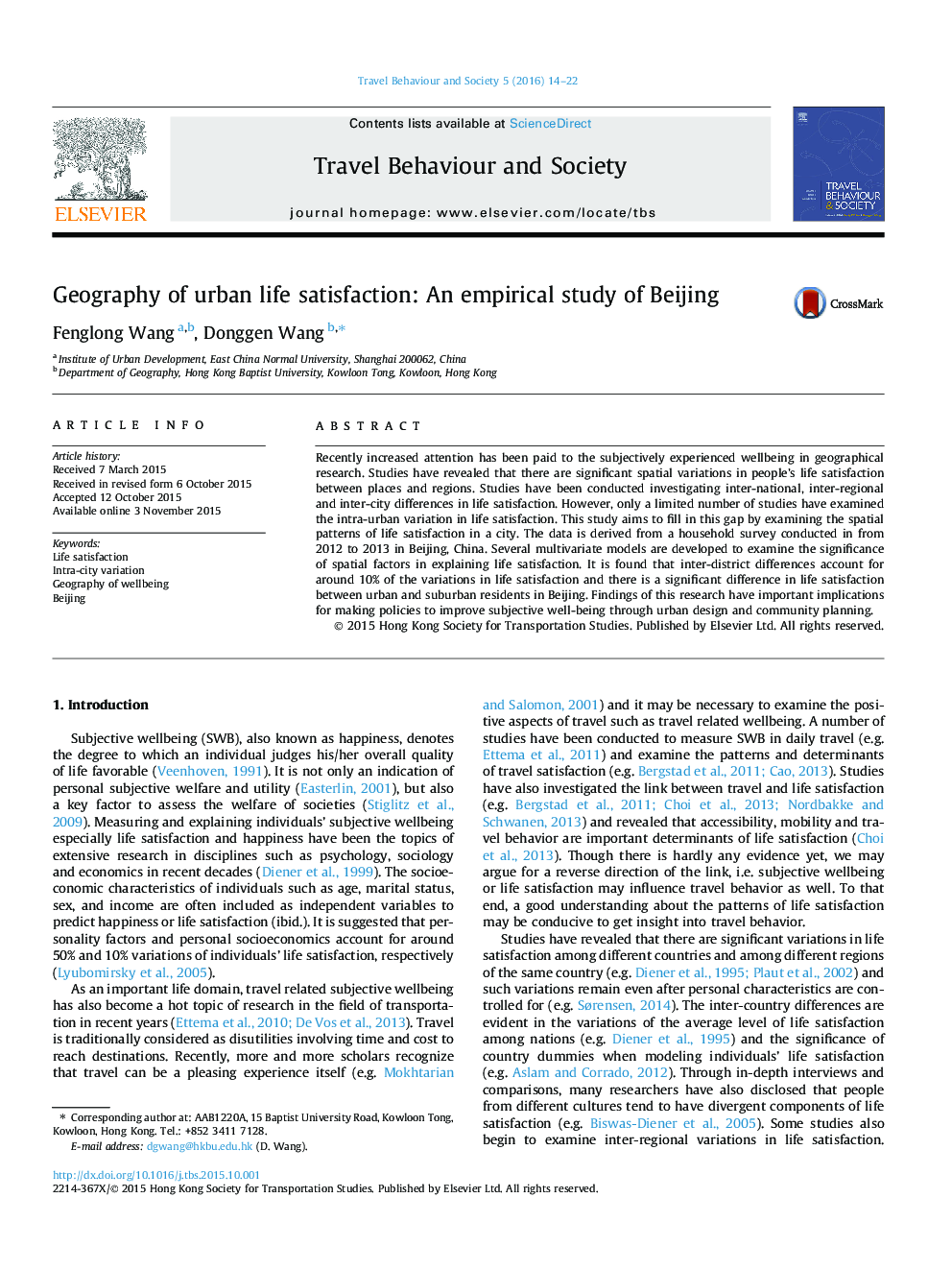| کد مقاله | کد نشریه | سال انتشار | مقاله انگلیسی | نسخه تمام متن |
|---|---|---|---|---|
| 141285 | 162849 | 2016 | 9 صفحه PDF | دانلود رایگان |
Recently increased attention has been paid to the subjectively experienced wellbeing in geographical research. Studies have revealed that there are significant spatial variations in people’s life satisfaction between places and regions. Studies have been conducted investigating inter-national, inter-regional and inter-city differences in life satisfaction. However, only a limited number of studies have examined the intra-urban variation in life satisfaction. This study aims to fill in this gap by examining the spatial patterns of life satisfaction in a city. The data is derived from a household survey conducted in from 2012 to 2013 in Beijing, China. Several multivariate models are developed to examine the significance of spatial factors in explaining life satisfaction. It is found that inter-district differences account for around 10% of the variations in life satisfaction and there is a significant difference in life satisfaction between urban and suburban residents in Beijing. Findings of this research have important implications for making policies to improve subjective well-being through urban design and community planning.
Journal: Travel Behaviour and Society - Volume 5, September 2016, Pages 14–22
